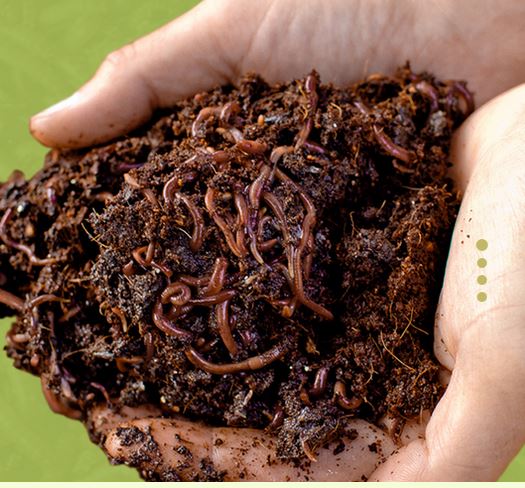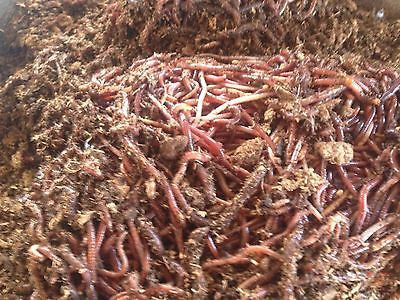The Ultimate Guide to Taking Care Of Red Wigglers in Your Yard
Caring for red wigglers in your yard is an essential component of lasting composting techniques that can dramatically enhance dirt wellness and fertility. Comprehending their details habitat needs, dietary choices, and upkeep demands is vital for cultivating an efficient vermicomposting atmosphere.
Understanding Red Wigglers

Red wigglers are defined by their reddish-brown pigmentation and segmented bodies, which can expand up to four inches in length.Comprehending the environmental and organic requirements of red wigglers is crucial for effective composting. By cultivating the ideal conditions for red wigglers, gardeners can enhance dirt fertility and advertise sustainable gardening methods.
Establishing the Environment
Developing an ideal environment for red wigglers is vital for optimizing their composting effectiveness and total health and wellness. Red wigglers flourish in a moist, dark atmosphere with a temperature array of 55 to 77 degrees Fahrenheit.
When selecting a container, choose one that is well-ventilated to permit air circulation while avoiding excess moisture loss. Plastic bins, wooden boxes, or specialized worm containers are all reliable alternatives. The base of the container must have drain holes to avoid water accumulation, which can bring about anaerobic problems unsafe to the worms.
Frequently examine the wetness degree of the bed linens, and include water as essential to maintain the excellent moisture. By developing these problems, you will certainly produce a flourishing environment for your red wigglers, urging efficient composting and healthier worm populaces.
Choosing the Right Food
Selecting the suitable food for red wigglers is vital for their health and composting efficiency. These worms thrive on a well balanced diet plan that consists of a selection of natural materials. Perfect food resources include vegetables and fruit scraps, coffee grounds, crushed eggshells, and shredded paper. It is necessary to stay clear of meats, milk products, and oily foods, as these can attract bugs and develop undesirable odors in the composting setting.
Red wigglers like food that is cut or shredded, as this increases surface area and advertises much more reliable digestion. Additionally, introducing food in percentages avoids overfeeding, which can cause anaerobic problems damaging to worm health and wellness. Keeping track of the worms' consuming routines can likewise supply understandings; if the food is consumed swiftly, consider progressively enhancing the quantity.

Preserving Dampness and Temperature Level
A well balanced diet is only component of the equation when it involves ensuring the health and wellness of red wigglers; preserving proper moisture and temperature level is similarly essential. Red wigglers prosper in a moist setting, ideally between 70-85 ° F(21-29 ° C) This array supports their metabolic processes and enhances their capacity to decay organic issue effectively.
Alternatively, too much moisture can develop anaerobic conditions, which may damage the worms and produce unpleasant smells. Routinely examining the moisture content and readjusting as needed is necessary for a prospering worm population.
In regards to temperature level, extreme fluctuations can be damaging. If temperature levels exceed 95 ° F(35 ° C) or drop below 50 ° F(10 ° C), the worms might end up being non-active or die. To minimize temperature extremes, think about making use of insulation for exterior containers or relocating the container to a shaded or temperature-controlled area. By meticulously managing both dampness read this and temperature, you create an optimum atmosphere for red wigglers, boosting their performance and overall health.
Harvesting Garden Compost and Treatment Tips
Collecting garden compost from your red wigglers is a rewarding process that not just benefits your yard but additionally boosts the efficiency of your worm bin - Where to buy red wigglers. To begin, select a harvesting technique that fits your configuration-- whether it's the tray, pyramid, or standard container approach. Each method allows for the separation of garden compost from worms properly
Once you're all set to harvest, focus on timing. Ideally, wait until the garden compost is dark, brittle, and earthy-smelling, commonly after three to 6 months of digestion. To collect, you can carefully dig deep into the compost from one side of the bin, allowing worms to migrate to the uninterrupted side. Conversely, you can published here utilize light to encourage worms to delve deeper, making it easier to accumulate the completed garden compost.
Treatment pointers after harvesting include renewing your worm container with fresh bed linen and food scraps to maintain a healthy and balanced worm population. Make sure that the wetness and temperature degrees stay optimum, and consistently keep track of for any indications of distress amongst the worms. By following these practices, you'll make certain a sustainable cycle of compost manufacturing that enhances your yard.
Conclusion
In final thought, the effective treatment of red wigglers necessitates a thorough understanding of their environment, dietary needs, and environmental conditions. Establishing an ideal habitat with appropriate air flow and dampness degrees click to read is essential for cultivating their health and efficiency.
By developing these problems, you will certainly create a flourishing environment for your red wigglers, encouraging effective composting and much healthier worm populaces.
The pH degree of the food is another crucial element; red wigglers flourish in a slightly acidic to neutral atmosphere.A balanced diet is only component of the formula when it comes to making certain the wellness of red wigglers; keeping proper wetness and temperature is equally crucial. By very carefully taking care of both dampness and temperature level, you create an ideal setting for red wigglers, enhancing their performance and overall wellness.
Gathering garden compost from your red wigglers is a satisfying process that not only advantages your yard but also boosts the efficiency of your worm container.